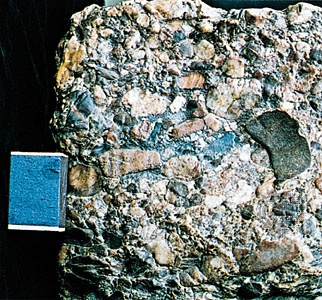conglomerate
business
in business, a corporation formed by the acquisition by one firm of several others, each of which is engaged in an activity that generally differs from that of the original. The management of such a corporation may wish to diversify its field of operations for a number of reasons: making additional use of existing plant facilities, improving its marketing position with a broader range of products, or decreasing the inherent risk in depending on the demand for a single product. There may also be financial advantages to be gained from the reorganization of other companies.
In the late 19th century many American conglomerates, such as the Standard Oil Company and Trust, sought to control all aspects relating to the development, production, marketing, and delivery of their products. Responding to criticisms of the apparent monopolies (monopoly and competition) enjoyed by such companies, the U.S. Congress enacted antitrust (antitrust law) legislation with the Sherman Antitrust Act (1890) and the Clayton Antitrust Act (1914).
A strategy of diversification spurred the formation of many conglomerates in the mid-20th century, especially as firms sought to acquire unrelated companies whose products and services might better withstand economic slowdowns. In that era, a holding company such as the former ITT Corporation or Gulf + Western (Gulf + Western Inc.) might have had interests that included hotels, film studios, telephone service, and insurance. By the late 20th and early 21st centuries, however, global competition created conditions that favoured industry consolidation, as evidenced by mergers among large corporations in the banking, automotive, telecommunications, computer, retail, and entertainment industries.
rock
 in petrology, lithified sedimentary rock consisting of rounded fragments greater than 2 millimetres (0.08 inch) in diameter. It is commonly contrasted with breccia, which consists of angular fragments. Conglomerates are usually subdivided according to the average size of their constituent materials into pebble (fine), cobble (medium), and boulder (coarse).
in petrology, lithified sedimentary rock consisting of rounded fragments greater than 2 millimetres (0.08 inch) in diameter. It is commonly contrasted with breccia, which consists of angular fragments. Conglomerates are usually subdivided according to the average size of their constituent materials into pebble (fine), cobble (medium), and boulder (coarse).A brief treatment of conglomerates follows. For full treatment, see sedimentary rock: Conglomerates and breccias (sedimentary rock).
Classification of conglomerates is based on the range of lithologies represented in pebbles, degree of size-sorting, composition of matrix, and whether or not clasts are in contact with each other. Each of these criteria has genetic implications. There are two broad types of conglomerates: (1) those whose pebbles are generally of one lithology, well-sorted (i.e., narrow size distribution), and matrix-poor; and (2) those with a heterogeneous pebble lithology, poorly sorted, and with abundant matrix. The degree of sorting indicates the method of deposition. Well-sorted conglomerates are produced by normal water currents, whereas the poorly sorted varieties result from rapid deposition, as in the case of mudflows or subaqueous slides. Well-sorted conglomerates imply erosion and deposition over a long time period with a loss of unstable minerals and a rock dominated by quartz or chert pebbles; the geologic environment of deposition is usually a widespread basal formation of overlapping marine units. The poorly sorted conglomerates have a matrix of clay or sand. The abundance of unstable minerals with poor sorting indicates rapid mechanical erosion and deposition, as in alluvial fans or in density currents (i.e., highly turbid bottom currents) resulting from gravity flows. In contrast to well-sorted conglomerates, formations are usually thick and of limited spatial distribution. Deposition by ice either in glacial till or by ice rafting also produces poorly sorted conglomerates or diamictites (larger nonsorted conglomerates).
- Denver, University of
- Denys Arcand
- Denzel Washington
- Denzil Holles, 1st Baron Holles
- Denzil Holles Holles, 1st Baron
- Deoband school
- Deoghar
- deontological ethics
- Deor
- Deorai, Battle of
- Deoria
- Deosai Mountains
- Deo Van Tri
- deoxyribose
- De Palma, Brian
- De Palma, Ralph
- Depardieu, Gérard
- department store
- DePaul University
- DePauw University
- Dependent States
- Dependent States 1
- Dependent States 1
- Dependent States1
- Dependent States{1} 1